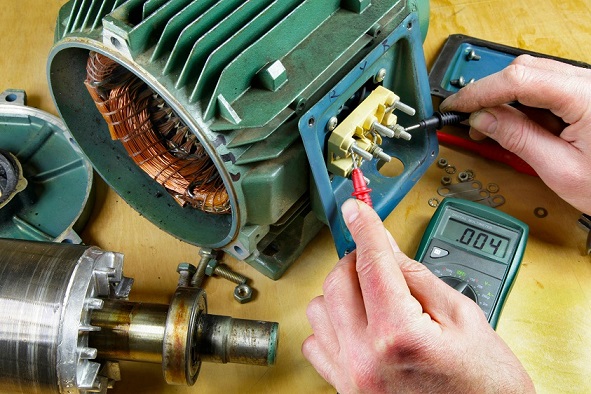The Protective Earth – PE or ground earth test measures the earth ground rod’s resistance.
PE/Ground AC
PE/Ground AC
Standards associated with this test
The list of standards available by using our equipments.
IEC 500106
IEC 60335-1
IEC 60034-1
Not sure which standard to refer to?
An important safety test
The Protective Earth – PE or ground earth test gives actual resistance of ground rod, used as a safety device to protect the machine from sudden unwanted voltage that occurs on different parts of the machine, such as machine body. The ground rod sinks all the voltage safely to the earth, without harm to the humans and causing damage to the machine’s system.
The un-wanted voltage appears on the machine surface or body due to a malfunction in electrical systems such as shorting or losing cables. This condition is hazardous for operators, and sometimes this voltage can also cause death. The un-wanted voltage also affects the machine’s working and can permanently damage the machine’s electrical and electronic components.
To prevent the hazards of this unwanted voltage, the machine is connected to the earth’s ground, which safely discharges the voltage to the ground potential. The resistance ground rod’s resistance must be minimum, ideally 0 Ohm, to avoid any difficulty in smooth discharging.
Additionally, with time, the resistance of the earth’s ground changes due to many reasons such as degradation in rod material, environmental factors and human error.
To check and verify earth ground resistance, Ground Testers are used. They measure the rod’s resistance and, depending upon its result, whether earth ground can be classified as satisfactory or not. If the resistance reading lies in the range, the ground rod is approved for safe operation. If the measured resistance lies outside the range, the ground is no longer classified as satisfactory and corrective actions are necessary to rectify the fault.
Ground Testers induce a high current in the earth rod. The tester’s internal circuitry measures the ground rod’s resistance. The range of satisfactory resistance varies from application to application, but most commonly, it ranges from 0 – 0.2 Ohm. The lower the resistance, the better the ground.
News
Some in-depth articles from the Risatti’s world.
Some fields of application
of our equipments
Our machinery can be used in various sectors.
Find out how and why our customized solutions could be right for you.
We are here to help you
Write to us. We’ll contact you as soon as possible!





